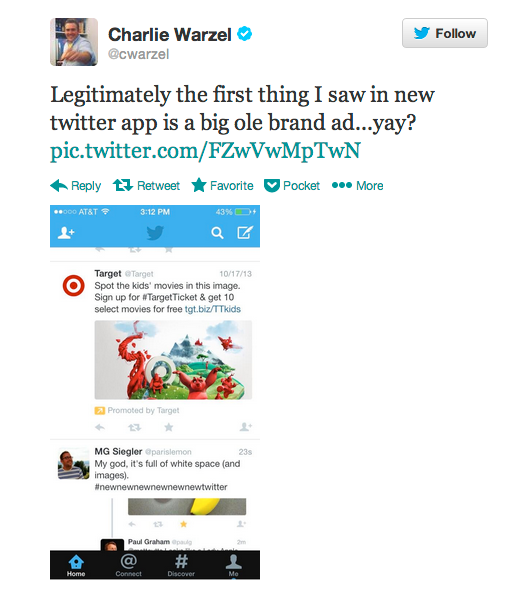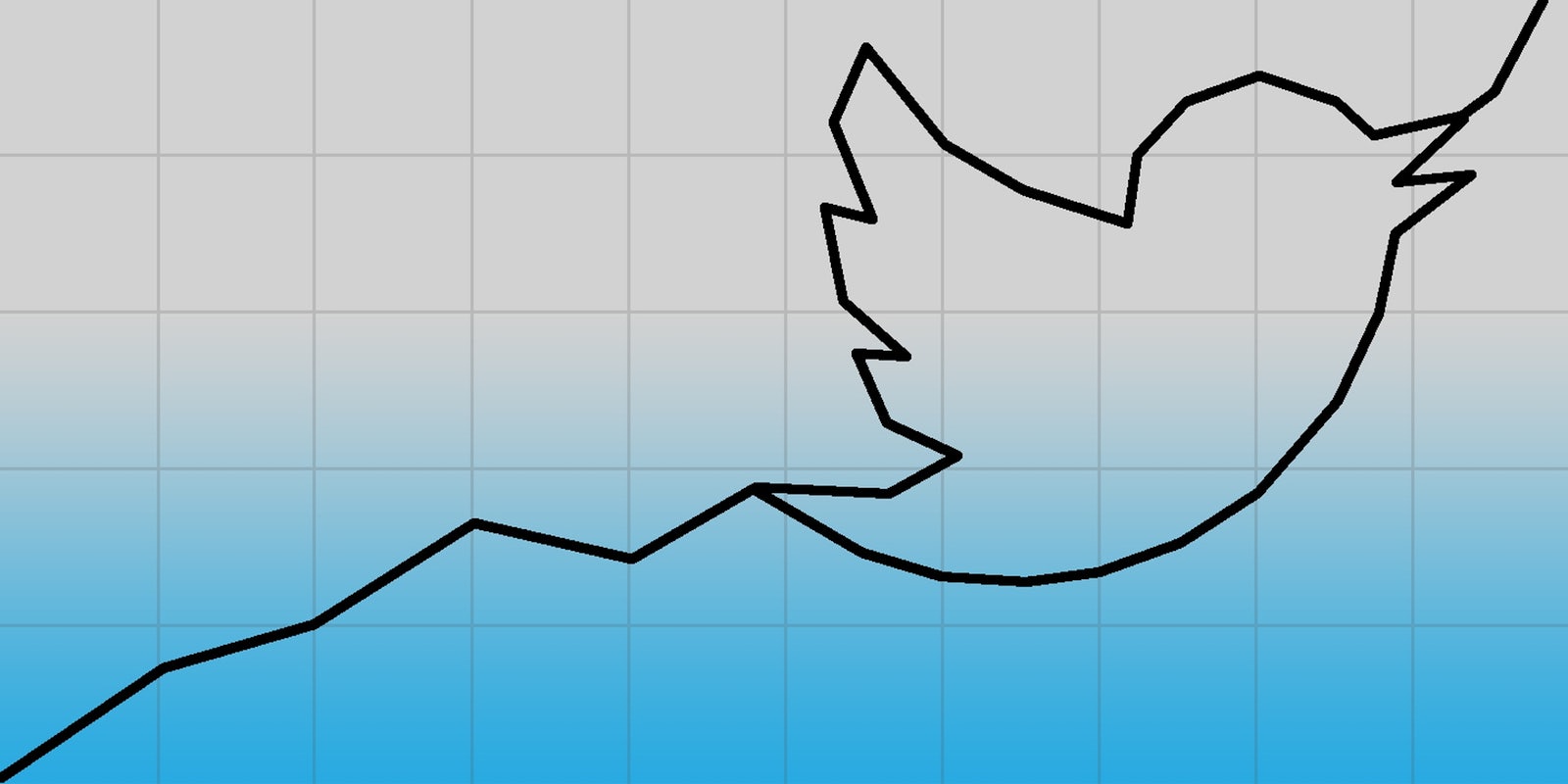Twitter, after quietly unveiling its new image-centric feed, became the target of much derision. Ad Age compared it to Facebook’s newsfeed display—a scrolling list of photos, events, articles, and the nocturnal hellspawn that is Bitstrips. Many users took to Twitter’s developer forum to voice their derision directly into the horse’s mouth. Slate’s Will Oremus likely put it best, calling upon the Twitter loyal to “join me, then, in cheering the dawn of a new Twitter—a Twitter in which words are relegated to their rightful role as captions.”
I, frankly, didn’t really notice the change. Twitter is such a clustercuss of information that a few images here and there failed to throw me. I can certainly see a right to complain, though. A once-sprawling ocean of the cocktail that is our culture now feels blocky and, well, Instagrammy.
However, when compared to previous redesigns of sites like Tumblr and Facebook, including images in your feed is really a minor change. Facebook, upon including the Timeline feature—or the newsfeed feature, or the Wall feature, or any other sort of change—was likewise lampooned for ruining what many supposed could not be improved upon. Looking back, the pre-Timeline Facebook was a hot mess, even more so than the current Facebook. It existed (for better or worse) more as a utilitarian photo album than the Reddit-inspired content farm it is today. With the unveiling of Timeline, Facebook ditched the point-type-click game and became a Land of Scrolling.
Twitter has always been a scrollfest. And guess what? It still is! The inclusion of images is no where near as drastic a change as Twitter could make. In fact, Twitter has been notoriously dogmatic about its format, refusing to increase the famous character limit or do anything to discourage the open-field environment it has bred for socializing with friends, strangers, and celebrities.
That environment, in fact, is encouraged by perhaps the smallest detail in the new Twitter: Retweet and Favorite buttons are now available unprompted in every tweet in your feed. While Facebook and Instagram have had sharing for some time, Twitter has always reigned in the chaotic mess of Facebook’s newsfeed (which runs on an algorithm) into something resembling the old RSS feeds (which run chronologically). By encouraging these “re-shares,” Twitter is at once reinforcing the coverage of live events it has ruled (“binders full of women” or the Super Bowl blackout, for instance) and increasing the chances for any one tweet to go viral. As BuzzFeed’s John Herrman put it, Twitter is becoming “a place where you feel like you at least have a chance of breaking through.”
What really seems to make people angry about the redesign is the idea that young, hip experiment-in-flash-fiction Twitter would dare try to make a profit off its 218 million users. The move is quite obviously a ploy to increase the value of ad space on Twitter, already a questionable purchase for any political campaign or cookie manufacturer. It becomes even more transparent when we see Facebook likewise made ad-friendly changes in lieu of their IPO, an unveiling Twitter is preparing for as we speak.
And once again we see Twitter learning from big bro Facebook’s mistake. Whereas Facebook’s IPO became an overhyped disaster for Zuckerberg & Co., Twitter is being applauded by investors and analysts for being, like its redesign, more subtle and understated than Facebook’s. For example, Twitter has lowered its per-share pricing from $20 to $17, looking to ward off the same overvaluation that caused an early sell-off for Facebook. And for the curious, that drops Twitter’s total value from $15 billion to $10 billion, far behind Facebook’s likely inflated pricing of $100 billion.
If the Facebook comparison seems forced, just ask the New York Stock Exchange. This past weekend, the NYSE ran its first ever test-run of an IPO to be sure their system could handle the traffic of Twitter’s unveiling—a test prompted by the chaos of Facebook’s big hurrah last year.

But placing ads front-and-center is not the end of free media as we know it.
As much as people complain about ads, your eyeballs are the currency that keep the Internet effectively free. And unlike Facebook, Twitter lacks the sensitive data necessary to scare the crap out of you in the privacy settings, meaning there’ll be no selling your image to advertisers. In fact, promoted tweets are even better highlighted as sponsored content than nearly any other social media site out there, be it Reddit or BuzzFeed.
Twitter’s format is often cited as a cause and symptom of our culture’s hype machine, encouraging journalists and citizens to indulge in shorthanded gossip and retweet-hungry overreactions. Likewise, any change made to our precious user experience is going to be disparaged as the death knell of everything good online. Change is scary, but it is possible for Twitter to be good to you and good to itself.
Illustration by Jason Reed


